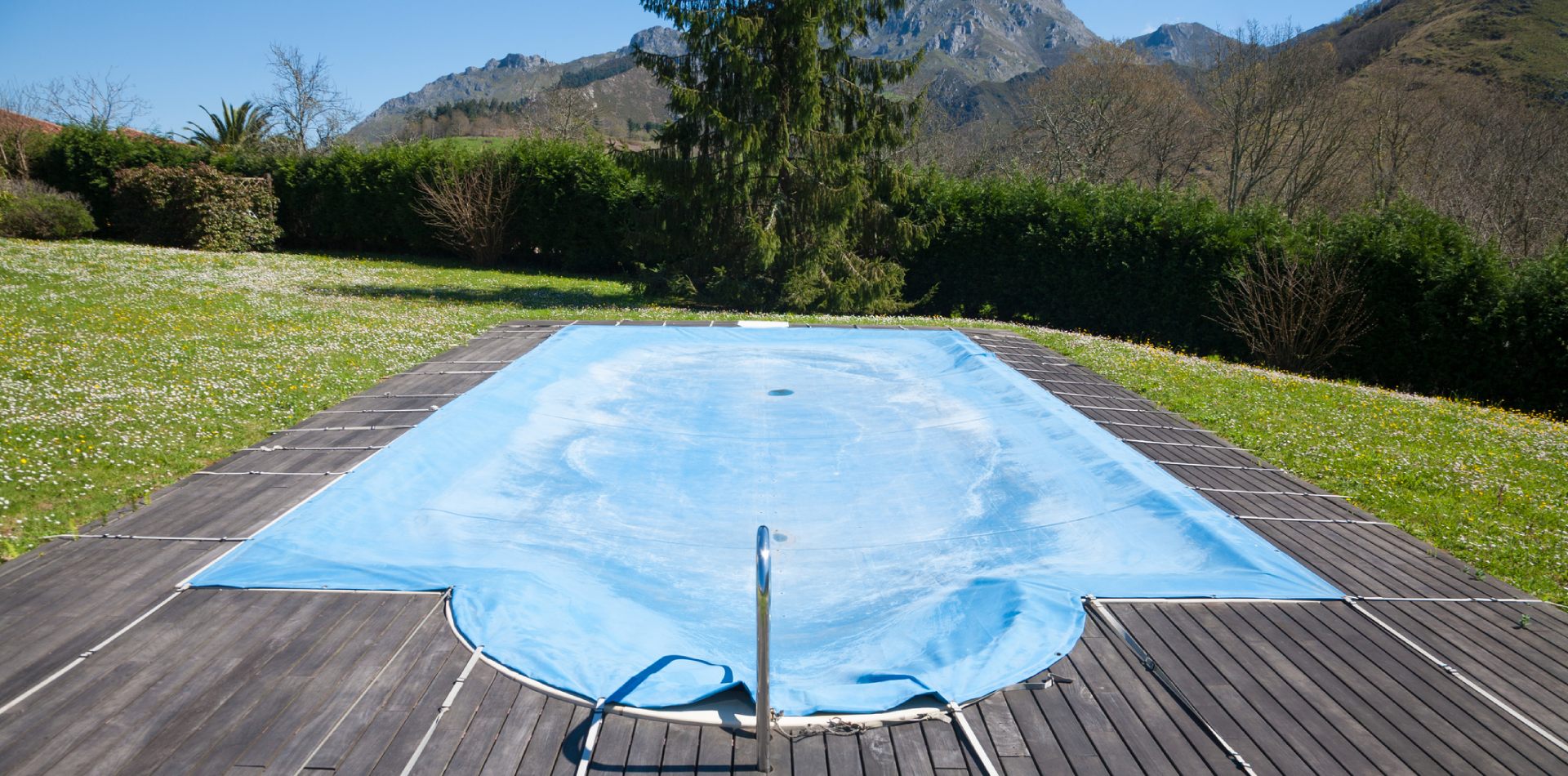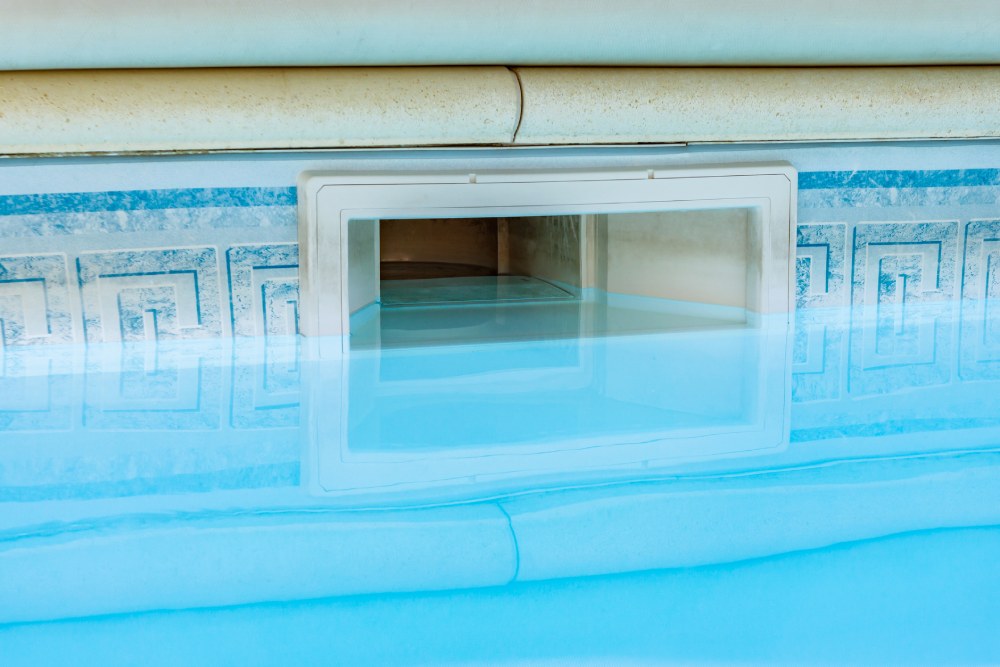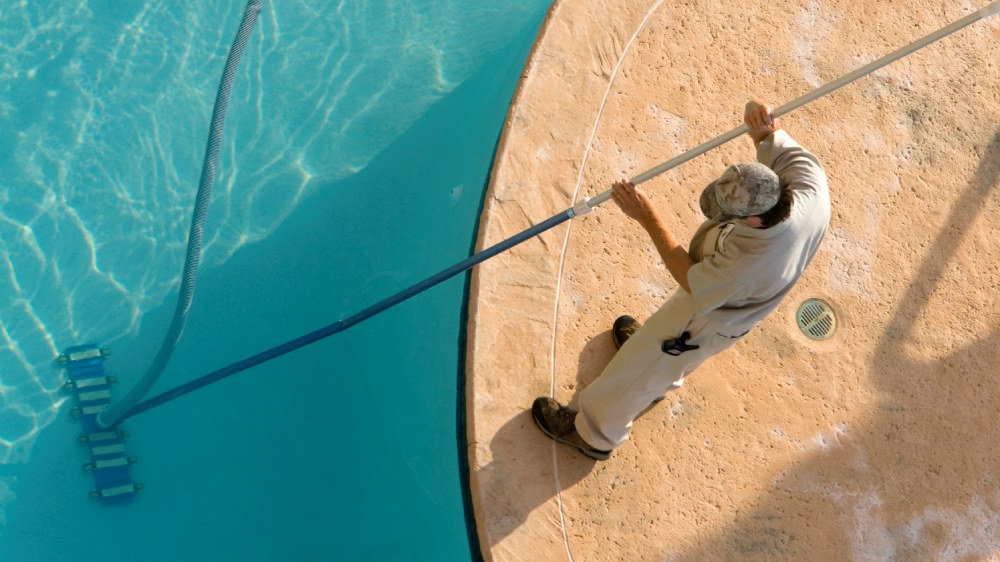
The first few warm days of spring will give you an irresistible desire to jump into your swimming pool, but is it still recovering from the winter?
Don't worry, because you might not need to wait for your swimming pool specialist to come! In fact, it is possible to de-winter your swimming pool yourself with a bit of knowledge and elbow grease.
When should you restart your swimming pool?
Don't be fooled by the first few warm days: they are regularly followed by cold periods when you won't feel like swimming (unless you're equipped with a heat pump, of course).
We therefore recommend de-wintering the swimming pool in mid-April, and at the latest when the water has reached a temperature of 12-15° C, as this is when algae start proliferating if no treatment has been set up.
How should you de-winter your swimming pool?
It all depends on the type of wintering for your swimming pool: active (the pool does work, but slowly) or passive (the hydraulic network has dried up and the swimming pool is covered). First, let's look at the second case, as this needs more work in order to restart.
For the 1st case... go directly to point 5 😉
1. Remove the cover sheet
Of course, the first thing to do is to remove the cover sheet that covers the pool. The water is green, but the quantity of micro-organisms was limited thanks to the wintering product.
2. Remove protections and fill the network with water
Next, remove any floats, gizmos or caps protecting the pool. The level of the water has risen over the winter because of rain, and the water will enter the pipes (top up with water if necessary).

Open the filter air flushing valve: if your filtration system is located below the water level of the pool, make sure you close the valve again before the water leaks through this opening.
3. Lubricate the gaskets and reconnect the pipes
Check the different gaskets, such as the pump pre-filter gasket, and lubricate them. Reconnect all equipment pipes and open the valves, along with the filter air flusher if it is located above the water level. At this stage, the hydraulic network should be ready to function.
4. Turn on the filtration pump
The pipes are now filled to the maximum with water. Open the pump pre-filter to fill it: if the pump runs dry, there is an incurable risk of the rotating gasket deteriorating. When the filtration pump is filled with water, close the pre-filter and restart it!
For extra convenience, consider fully opening the skimmers, the main drain and the suction point to maximise the water flow rate.
Once the pump starts up, the filter will fill little by little. This is when the filter flusher needs to be opened to let all the air out. Close the air flusher when the water starts coming out through it.
5. Set up the water treatment and clean the swimming pool
You are now in an active wintering situation: the water circulating in the network of your swimming pool has been filtered, but not treated.
First, adjust the water balance: set the CAT value to between 80 and 120 and the pH to 7.2 (read our article on water processing if you need more detailed advice).
Next, administer a "chlorine shock" to eliminate any algae, bacteria etc. that have accumulated over the winter.
The micro-organisms destroyed by the chlorine will turn the water in your swimming pool an off-white colour: let filtration continue until it is transparent again. Next, wash your filter (cartridge or sand backwash).
This is where you'll need elbow grease: during this filtration process, sweep the walls of the swimming pool with the aid of a manual sweeper connected to the suction point to suck up any residue.

Do not use the robot for this initial spring cleaning session! It will get saturated very quickly, making it useless.
When the water has become clear again, check its balance again, then maintain its chlorine level as you would normally during the season.
6. Turn on the automatic devices and the heat pump
Last step: start your automatic devices, such as the chlorine injector or electrolyser.
If you own a heat pump, only let the water pass through after this stage via a bypass, and heat the water 24h/24 so that its temperature rises while the swimming pool is kept covered.
Now you're ready for a new season!
Restarting a swimming pool after winter doesn't require special technical knowledge, but you do need to follow a certain procedure: if you decide to do it yourself, the most important thing is to carry out the steps in the right order to avoid risking any material damage or water leaks.
Finally, it's true that we often repeat this advice, but it is by far the best option for your swimming pool's lifespan and your wallet's health: if you have any doubts at all, please don't hesitate to call a professional swimming pool specialist.
Add new comment